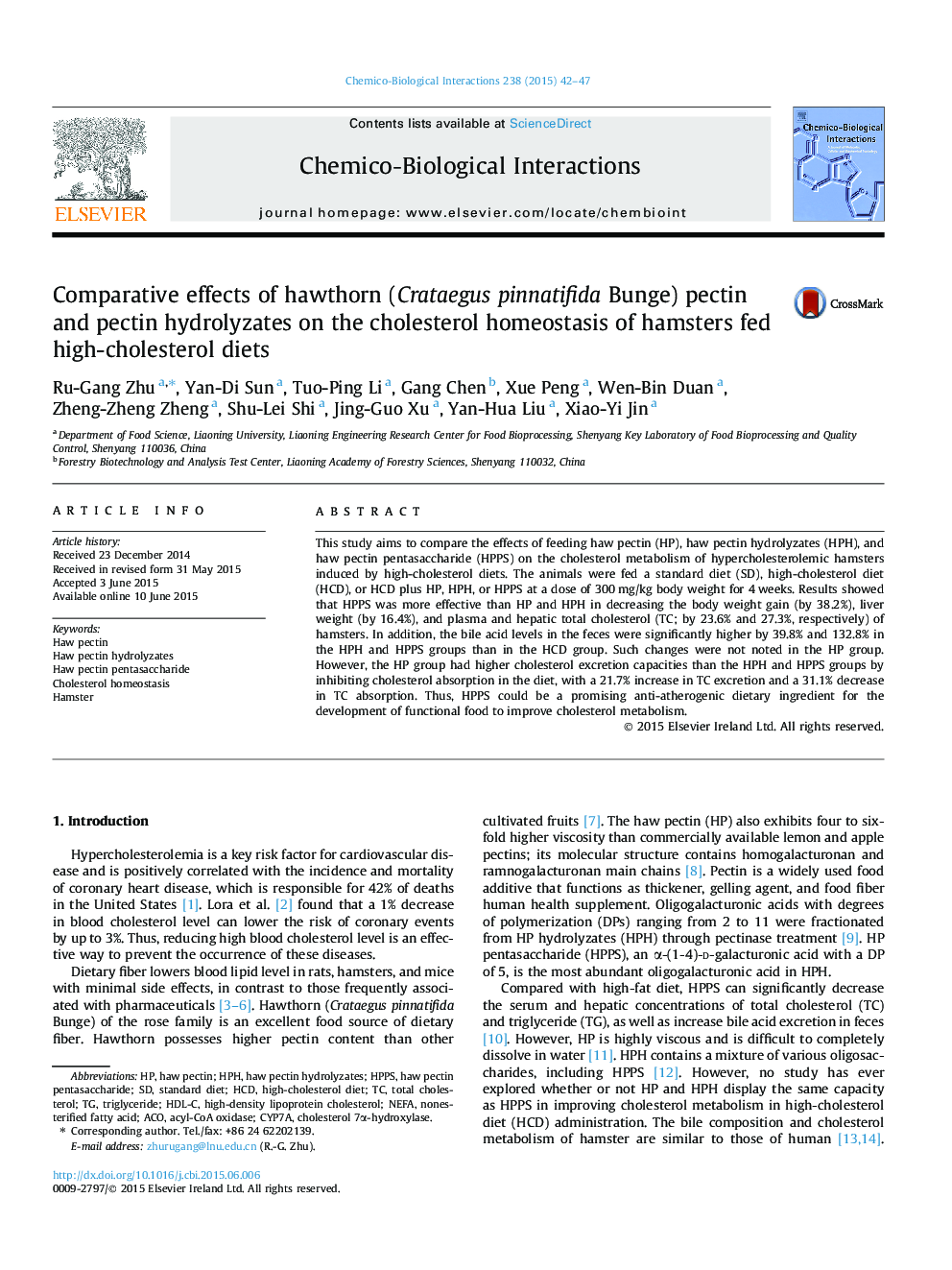| Article ID | Journal | Published Year | Pages | File Type |
|---|---|---|---|---|
| 5847795 | Chemico-Biological Interactions | 2015 | 6 Pages |
Abstract
This study aims to compare the effects of feeding haw pectin (HP), haw pectin hydrolyzates (HPH), and haw pectin pentasaccharide (HPPS) on the cholesterol metabolism of hypercholesterolemic hamsters induced by high-cholesterol diets. The animals were fed a standard diet (SD), high-cholesterol diet (HCD), or HCD plus HP, HPH, or HPPS at a dose of 300Â mg/kg body weight for 4Â weeks. Results showed that HPPS was more effective than HP and HPH in decreasing the body weight gain (by 38.2%), liver weight (by 16.4%), and plasma and hepatic total cholesterol (TC; by 23.6% and 27.3%, respectively) of hamsters. In addition, the bile acid levels in the feces were significantly higher by 39.8% and 132.8% in the HPH and HPPS groups than in the HCD group. Such changes were not noted in the HP group. However, the HP group had higher cholesterol excretion capacities than the HPH and HPPS groups by inhibiting cholesterol absorption in the diet, with a 21.7% increase in TC excretion and a 31.1% decrease in TC absorption. Thus, HPPS could be a promising anti-atherogenic dietary ingredient for the development of functional food to improve cholesterol metabolism.
Keywords
Related Topics
Life Sciences
Environmental Science
Health, Toxicology and Mutagenesis
Authors
Ru-Gang Zhu, Yan-Di Sun, Tuo-Ping Li, Gang Chen, Xue Peng, Wen-Bin Duan, Zheng-Zheng Zheng, Shu-Lei Shi, Jing-Guo Xu, Yan-Hua Liu, Xiao-Yi Jin,
